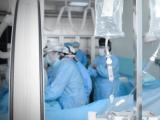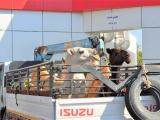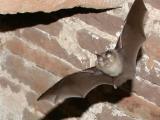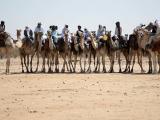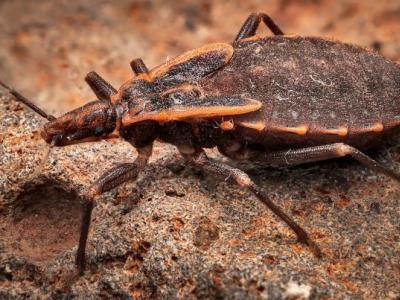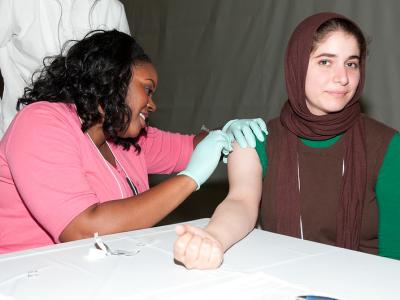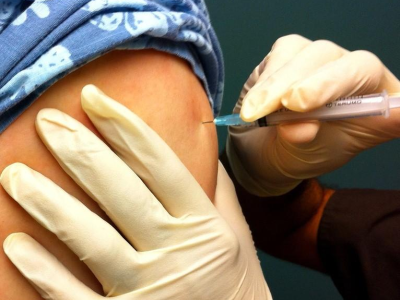Saudi Arabia reported two new MERS-CoV cases today, one of them involving camel exposure, as new details emerged about a Saudi link to a recent case in Qatar and a new recombinant clade of the virus that was implicated in a surge of illnesses in early 2015, many of them tied to health facilities in Riyadh.
A steady stream of Saudi MERS-CoV cases in March has slowed to just a few sporadic cases every few days in recent months, most of them reflecting primary exposure, often from camels.
Camel source noted in 1 case
In a statement today the Saudi Ministry of Health (MOH) said one of the two newly confirmed patients is a 68-year-old man from Medina who is in stable condition. An investigation into the source of his MERS-CoV (Middle East respiratory syndrome coronavirus) infection revealed indirect contact with camels.
The other illness involves a 49-year-old woman in Riyadh who is hospitalized in critical condition. She isn't listed as a healthcare worker, and the source of her infection is listed as primary—meaning she had no known contact with other sick people.
Their infections lift Saudi Arabia's MERS-CoV total to 1,388, which includes 593 deaths, according to the MOH. Five patients are still being treated for their illnesses.
New Qatari case details
Qatar's health ministry on Jun 12, meanwhile, reported a new MERS-CoV case in a 23-year-old man who hadn't been in contact with other confirmed cases and didn't have any underlying health conditions. The announcement prompted ProMED Mail, the e-mail list of the International Society for Infectious Diseases, to ask members in Qatar for more information.
In response, Qatar members of EpiCore Surveillance Project, an online infectious disease reporting system, said the man was from Bangladesh and had traveled to Saudi Arabia, where he had contact with camels. His MERS-CoV infection was detected when he was hospitalized after a 4-day history of cough and fever. They said the man is stable and under observation.
The man's illness is Qatar's 3rd of the year and its 18th case overall.
New clade in 2015 also found in camels
The identification of a novel recombinant MERS-CoV clade came through the emergency public health response to a gush of MERS-CoV cases in Saudi Arabia during the first half of 2015, especially in February when Riyadh experienced some substantial hospital outbreaks. The sharp rise in cases last February triggered a joint World Health Organization (WHO) mission to Saudi Arabia to assist with the investigation.
Researchers from Saudi Arabia and the US Centers for Disease Control and Prevention published their findings yesterday in the Journal of Infectious Diseases.
Their investigation included epidemiologic and molecular testing information from 216 cases reported to the MOH from Jan 1 to Jun 30, 2015. They did a more in-depth analysis of cases reported in February, when the biggest spike in cases was reported. Of 87 cases reported during that month, 13 case-patients didn't have any risk factors for secondary infection and 12 reported no camel contact, which raised questions about whether the virus had changed.
Spike gene or full genome analysis of MERS viruses from 99 patients found that 72 formed a new recombinant clade that the group dubbed NRC-2015. Viruses in the new clade were detected from six of Saudi Arabia's regions and became the predominant strain by June 2015. Eight of the nine viruses from the group of patients with no known risk factors belonged to the NRC-2015 clade.
When the researchers compared the viruses in the new clade with previous strains, they found that NRC-2015 persisted longer than earlier clades and that it gained a wide geographic distribution in a relatively short time, which hinted at greater epidemiologic fitness. However, they didn't find any clinical differences between it and earlier clades. The team said implications for virus replication and transmission need further study, and the lack of epidemiologic links in some cases shows the need for more intensive surveillance to better understand MERS-CoV transmission.
The authors wrote that studies documented the NRC-2015 MERS-CoV features in recent camel samples from Oman and Saudi Arabia, first detected in July 2014 and becoming predominant in Saudi Arabia at a time that overlaps the new findings in humans. Taken together, the pattern might reflect multiple introductions from camels with similar strains, the team noted.
NRC-2015 probably emerged in mid to late 2014 and, based on camel sequences, likely diverged between December 2013 and June 2014, according to the study.
Other clues from the study included closely similar viruses in patients without risk factors, which could suggest limited transmission from those with unrecognized MERS illnesses. The researchers also noted that 16 (18%) of the patients sickened during the February surge were hospital visitors, similar to the 17% figure for hospital visitors in the 2014 outbreak in Jeddah.
"Recommendations to limit visitation in facilities with ongoing MERS-CoV transmission should be reinforced to limit these exposures," the group wrote.
See also:
Jun 15 Saudi MOH statement
Jun 13 CIDRAP News story "Qatar, Saudi Arabia report new MERS cases"
Jun 13 ProMED Mail post
Jun 13 J Infect Dis study


